Display advertising has become increasingly difficult.
And to be honest, it’s not usually that effective.
The average display ad click-through rate for desktop is 0.27%.
Meaning that it’s becoming harder and harder to reach people with display ads.
And typical remarketing conversion rates aren’t something to brag about either.
Why? Banner blindness.
People are tuning out your ads.
They are purposefully choosing to ignore them and blocking them from their conscious view.
So all those precious conversions you were once getting on display and remarketing ads have tanked.
People don’t want to see your ads anymore, and that means less revenue for you and your business.
But, you still need your PPC revenue to keep the business alive and healthy.
PPC is one of the best ways to drive cheap sales.
You can’t risk ditching a platform that has so much potential to bring in consistent revenue.
You can’t afford to not use PPC when you’ve driven high-ROI customers on it.
Thankfully, there are a few ways to overcome banner blindness and make your PPC successful.
There are even a few remarketing campaigns that you can run that will convert every single time.
So let’s break down exactly what banner blindness is, and how you can overcome it.
What is banner blindness?
Average click-through rates of display advertising aren’t good. In fact, they suck.
Even on mobile, you can only expect .63% as your top CTR. And desktop click-through rates are even worse!
So why is this happening? Why do display-ad CTRs suck? What’s the cause?
What is banner blindness, you ask?
Let’s take to Google as we usually do to give us a surface-level definition:
And in plain English, my definition:
Over time, people have started to disregard pieces of information they find useless. For example, banner ads. They now consciously or subconsciously tune out ads as someone would white noise.
So now, instead of seeing your amazing display ads that you spent hours designing, and months A/B testing, consumers are starting to see this:
It’s just white noise, and their ears (and eyes!) are closing to it.
And sometimes they don’t even realize they’re tuning it out, making it that much more difficult for you to convert them to a new sale.
Consumers hate ads so much that they’ve started to implement technologies to block those ads.
And ad-blocking programs are on the rise:
In fact, there are more than 380 million people using ad-blocking technology on mobile phones, alone.
On top of that, there are more than 236 million people who are ad-blocking on their desktops, too.
And the growth is skyrocketing. Back in 2011, there were only 21 million people using these types of programs.
Now we have more than half a billion people using it across mobile and desktop combined.
And check out the main reasons why people are using this technology:
Some of the main reasons should jump out at you:
- Interruption
- Speed
And the real kicker:
- Too many ads
That’s horrible news for marketers. It’s actually a PPC expert’s worst nightmare.
And for every article like this to give you tips on how to overcome banner blindness, there is a counterpart filling in consumers on how to better block ads.
But it makes sense when you think about it.
Marketers sent out over 5.3 trillion display ads in a year. And we are seeing more than 1,700 ads per month.
No wonder ad-blocking technology is on the rise like we’ve never seen before.
Consumers are constantly overloaded with ads, and it’s driving them insane.
It’s like they’ve become the new commercials. Think about it:
When you’re watching tv and enjoying an awesome show, it’s like browsing a website.
You’re seeing exciting new content that you’ve been dying to get your hands on.
And then the commercials come on. For five straight minutes.
They’re taking you away from your precious show and the reason you’re watching in the first place.
Aka, the banner ads.
All that joy you built up was just drained of life by bombarding advertisements.
So, you tune them out. You do something else while the commercials come on.
And on a website, you just subconsciously start to ignore them.
All in all, banner blindness is tough to overcome.
But, I suggest you use these two remarketing campaigns to gain a little traction.
Here’s how.
1. Target specific user-behavior flows
With banner blindness and ad-blocking technology on the rise, it’s crucial that you innovate your remarketing campaigns.
Simply running a remarketing campaign based on all website visitors in the last 60 days isn’t going to cut it.
These people are sick of the remarketing ads, and they don’t care anymore.
They won’t click on your ads, so don’t even waste your time.
One of the best (if not the best) ways to overcome banner blindness with remarketing is creating a campaign based on user flow.
Here’s an example of what user flows can look like on a given site:
But remember: user flow will be different on every site depending on the layout.
And optimizing your remarketing based on a typical user flow is my favorite way to drive tons of conversions.
Sick of a .27% CTR? Then you need to switch it up.
The user-flow based remarketing tactic helps you sort out the “almost ready to convert” visitors from the ones who will drive your CTR close to 0.
Typical remarketing targets all your website visitors.
User-flow remarketing targets specific users based on their on-site behavior that signals their intent to convert.
For example, you can target people who land on a sequence of your pages like:
Blog post -> about page -> product features page -> pricing page
If people hit those pages, there’s no doubt that they’re close to converting.
But before you jump into a remarketing campaign, you need to figure out what your user-flow looks like.
Start by opening up your Google Analytics account and heading to your dashboard. Go to the “Behavior Flow” section:
This will give you a breakdown of what pages your traffic is going to after they get to one of your site’s landing pages or your homepage.
Here’s what the flow looks like:
You can also customize the first value “Landing Page” to anything you want.
But for this example, we’ll stick with starting on a landing page.
From here we can see where people are moving through your site.
Here’s what the big picture will look like:
Notice how the interactions move and any trends that you see.
Notice any trends? Look for common ways the people move through your site.
Are people looking at a landing page, then going to your about page and then your pricing page?
The key here is to narrow down the pool of remarketing eligible visitors by looking for “intent” patterns.
You can tell where someone is in their buyer’s journey based on what pages they check out.
Signals like someone viewing your pricing page let you know how ready they are to convert.
On the pricing page, consumers have moved out of consideration, and into the decision stage of the buying process.
And this is the consumer you want to target.
To get started tapping into the user flow, start by creating the audience.
You can do this on both AdWords and Facebook.
Let’s start with Facebook.
Head over to your Facebook Business Manager and navigate to the Audience section under Assets:
Next, click “Create Audience” and then “Custom Audience:”
Be sure to select “Website Traffic” as your custom audience type:
Here’s where the fun part begins.
Now you can take that user-behavior flow from Google Analytics and use it to your advantage in targeting specific website-traffic patterns.
Next, we want to select “People who visited specific web pages” instead of “All website visitors:”
First, start by targeting people who visited your landing page URL or starting URL:
This is the base of your user flow.
Next, add in the second step from your Google Analytics flow.
For example, it could be a blog post:
Then, add the 3rd step in the user flow like someone visiting your product features page:
And the last step should be someone landing on your pricing page.
This is a big indication that someone is primed to convert on your product.
With a great remarketing ad you can tap into that and push them over the edge to convert.
Here’s what your final setup should look like (but obviously tailored to your specific user flow, not mine):
I know what you might be thinking:
Neil, won’t this limit my remarketing pool to a smaller group?
Yes, and that’s exactly point. Targeting every website visitor in the last 30 days will get you a CTR of .27%.
Why spend your time on such a measly return?
Focus on the users that are showing serious interest in your site. Customize the audience to target a specific behavior and user flow that shows high-intent to purchase.
I guarantee that you’ll see better CTRs and better conversion rates despite the rise of banner blindness.
Make sure to rename this audience and feel free to create multiple audiences based on multiple user-flow variations.
Prefer doing this on AdWords instead of Facebook? That’s pretty easy, too.
Head to AdWords and click on your drop-down menu. Click on “Audience manager” to get started.
Click the blue “+” button:
And select “Website visitors” from the list:
On the remarketing audience settings, start to add multiple URLs that correspond to your user flow, just like you did for the Facebook campaign:
Simply click the blue “and” button to add another URL that users must hit to qualify for the audience.
Next, select your list size and membership duration:
When you’re ready, simply hit “Create Audience,” and you can start building up your specific lists.
2. Focus on current customers and lifetime value
So you’ve successfully driven some awesome conversions.
You hooked a group of people with lead magnets like e-books and checklists.
Then, you sent them a few remarketing ads and finally got them to convert.
Time to celebrate! Our work here is done, right?
Although most people might think we’re finished, there is still work to be done.
But why? Well, the fun has only just begun.
A loyal customer is worth 10x as much as their first purchase:
And a simple boost in retention will up your profits anywhere from 25-95%.
Think about it: If someone has already converted on your product or service, it’s vastly cheaper to market to them again.
You don’t have to push awareness ads, lead magnets, and then purchase offers.
You can virtually skip the entire conversion funnel.
Here’s what a typical conversion funnel looks like:
Notice how there are different tools for attracting people at each stage of the funnel?
Top of the funnel focuses on attracting non-brand-aware visitors.
Next, in the middle of the funnel, you focus on forms and landing pages to get leads.
Then, you qualify those leads and turn them into customers.
But what if you’ve already done that?
You can skip the virtual line and go straight to a conversion offer, again.
Lifetime value is what you need to focus on here.
This means building customers that convert often, rather than focusing on 10,000 small conversions.
To run a remarketing campaign for this, you have a few options.
You can either export your customer list to AdWords and Facebook, or you can target visitors on your “thank you” pages.
For this, I suggest customer lists.
First, start by heading to Facebook and creating another custom audience:
This time, choose “Customer File” instead of “Website Traffic:”
Next, you need to add customers from your own data. Take emails from converted visitors or filled-out forms and upload them to Facebook:
The point here is to grab a list of your converted visitors and use that to remarket those customers for up-sells or more purchases.
With this type of custom audience you can tailor things like email, phone numbers, and more to match their contact information with an active Facebook profile:
This will populate an audience list for you to remarket to people who already love your products!
It’s an incredible way to bypass banner blindness.
Instead of being sick of your ads and tuning them out, people will click on them because they’ve already used and enjoyed your products!
And you can do this on AdWords, too.
Head back to your audience section and click the blue “+” button again:
This time, select “Customer list” instead of “Website visitors:”
Next, simply upload your customer emails into the database:
It’s that easy! Now, you can start remarketing those current customers or converted forms for easier access to further conversions.
But, what if you don’t have a customer list?
Not to worry. You can easily remarket current customers by targeting hits on your “thank you” pages.
In AdWords, go back to the Website visitors option:
Now, here’s the kicker: target your thank-you pages by specific campaigns:
For example, if you were running a conversion campaign for one of your products, have a non-indexed thank you page for that specific conversion.
Input that link into the URL section and you’ve got an audience to remarket to that you know loves your products!
Or, if you prefer Facebook, simply do the same thing.
Create a new custom audience and target the specific URL of that page:
It’s that simple. Now you can easily reach your current customers with better offers and upsells to drive more sales and increase lifetime values.
Conclusion
Display advertising has become tougher and it’s harder to drive clicks and sales.
In fact, the average CTR of a display ad on desktop computers is .27%.
Meaning that those precious display clicks just aren’t happening.
And standard remarketing conversion rates aren’t great, either.
For this, we can thank banner blindness.
People are simply not looking to see a bunch of ads every time they browse a website.
So all that time spent designing and planning your display campaigns is at risk.
And fewer clicks on your ads means you’ll see a huge spike in ROI and revenue.
But don’t think that means you should give up on PPC.
You need it to keep driving low-acquisition-cost sales.
Thankfully, there are ways to make it work and win at the banner-blindness game.
First, try running a remarketing campaign based on specific user-behavior flows on your website.
Check Google Analytics to inspect common flows on your site.
Next, try focusing on current customers. This is one of the best ways to overcome banner blindness and drive sales from brand-aware buyers.
You can fight banner blindness. Marketers shouldn’t just give up on PPC because of a decline in success.
Instead, we need to get creative and reinvent the remarketing campaign to drive more sales.
What remarketing campaigns have been successful for you?


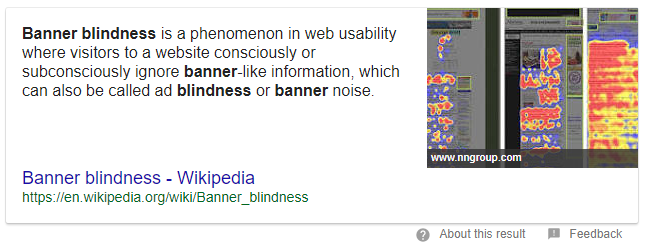
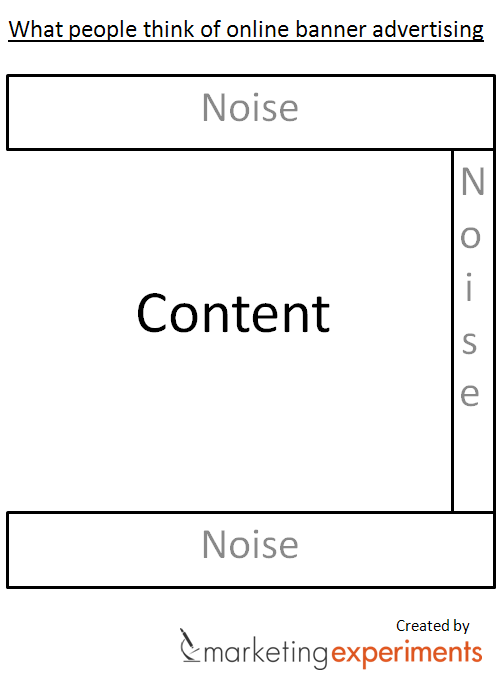
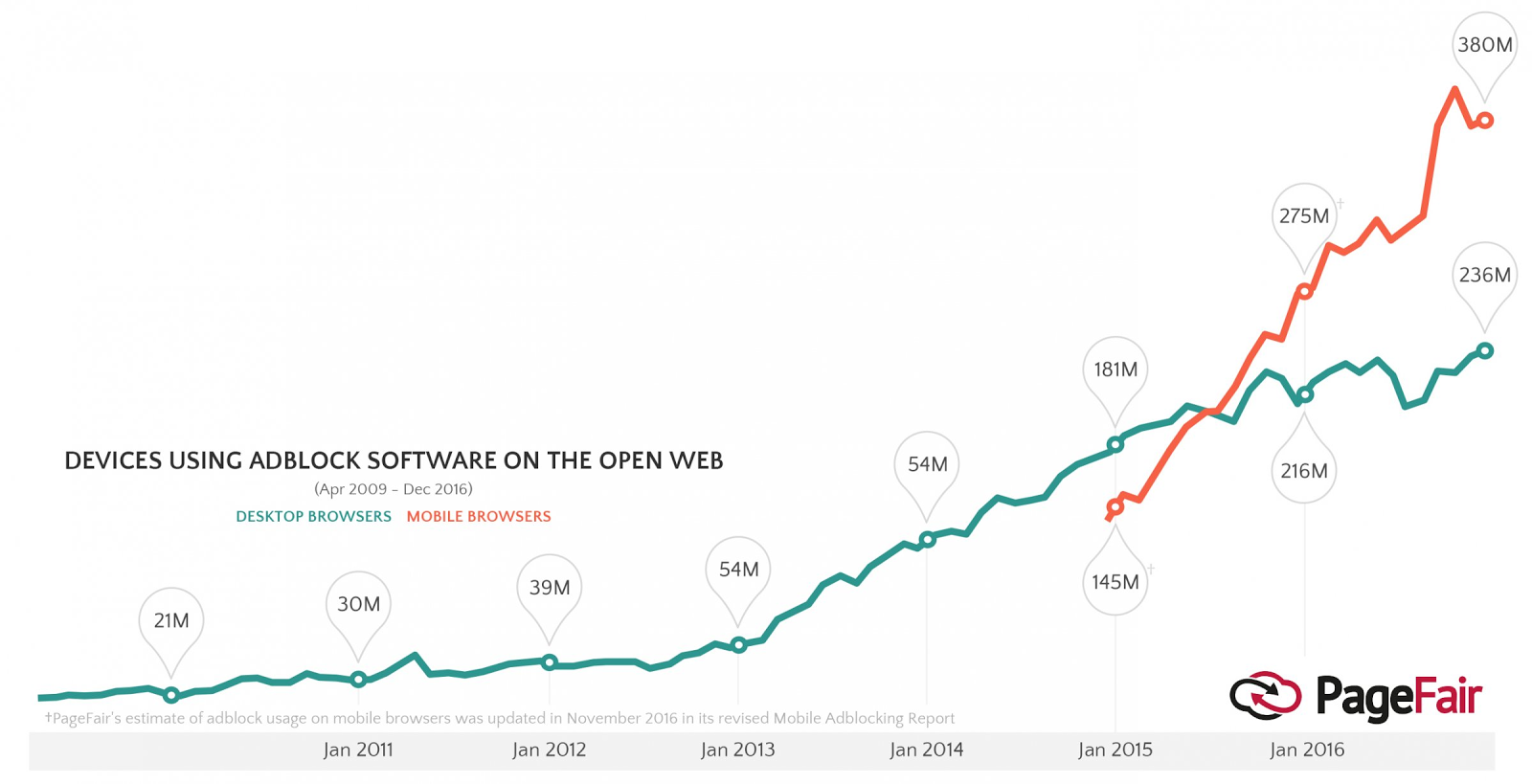
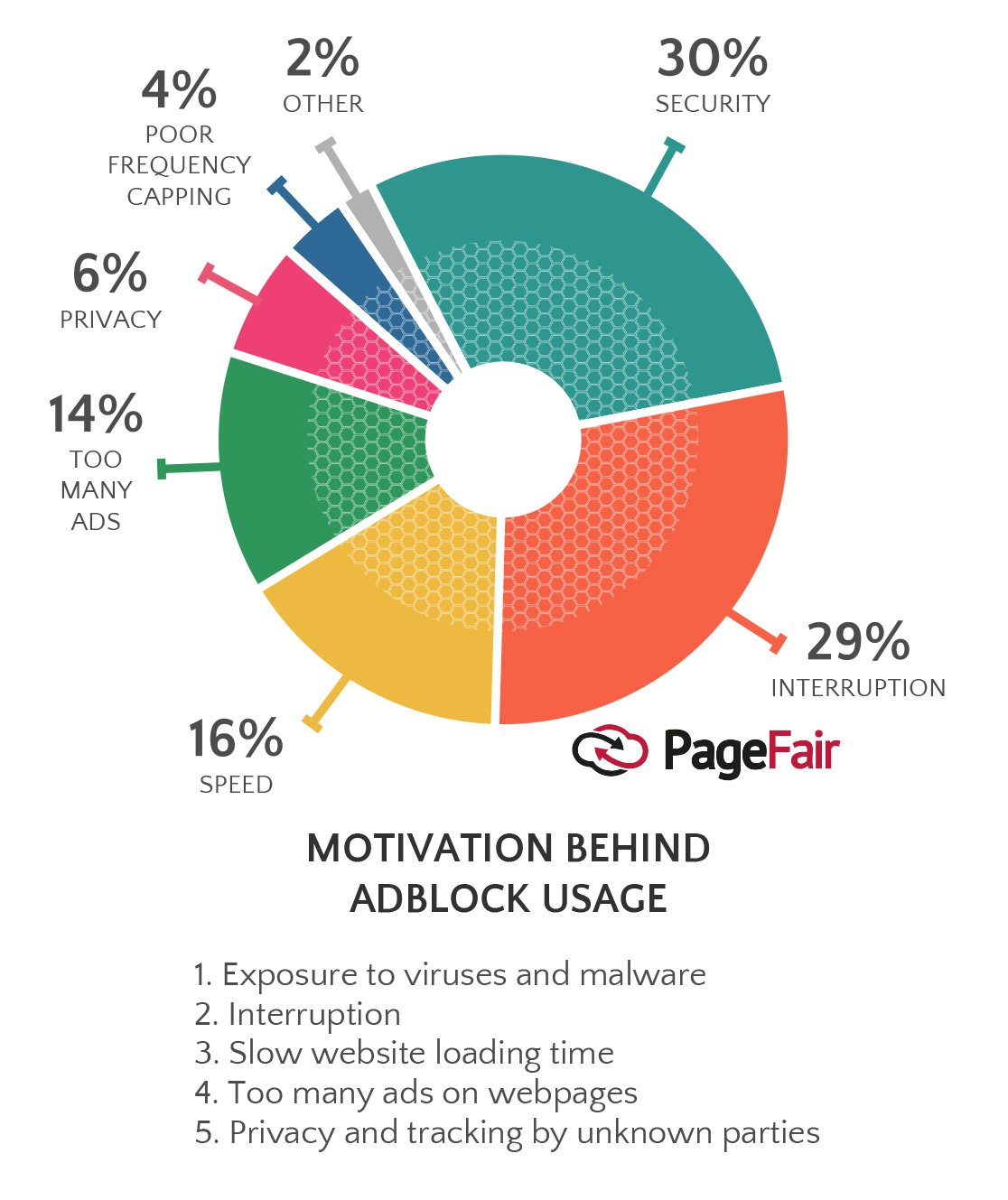

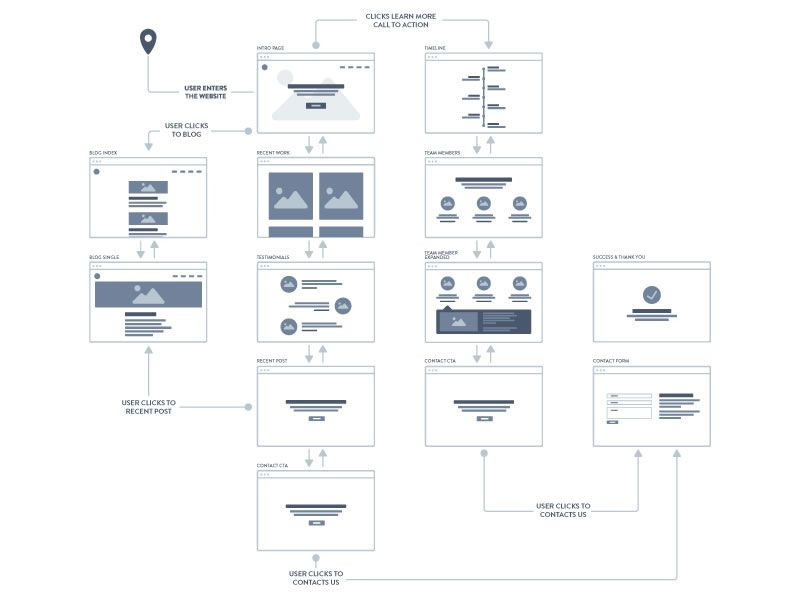
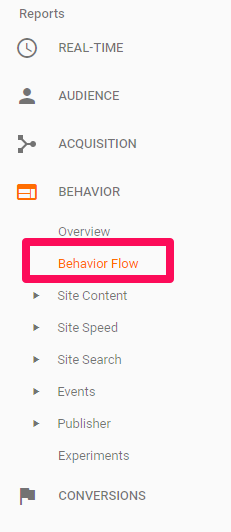

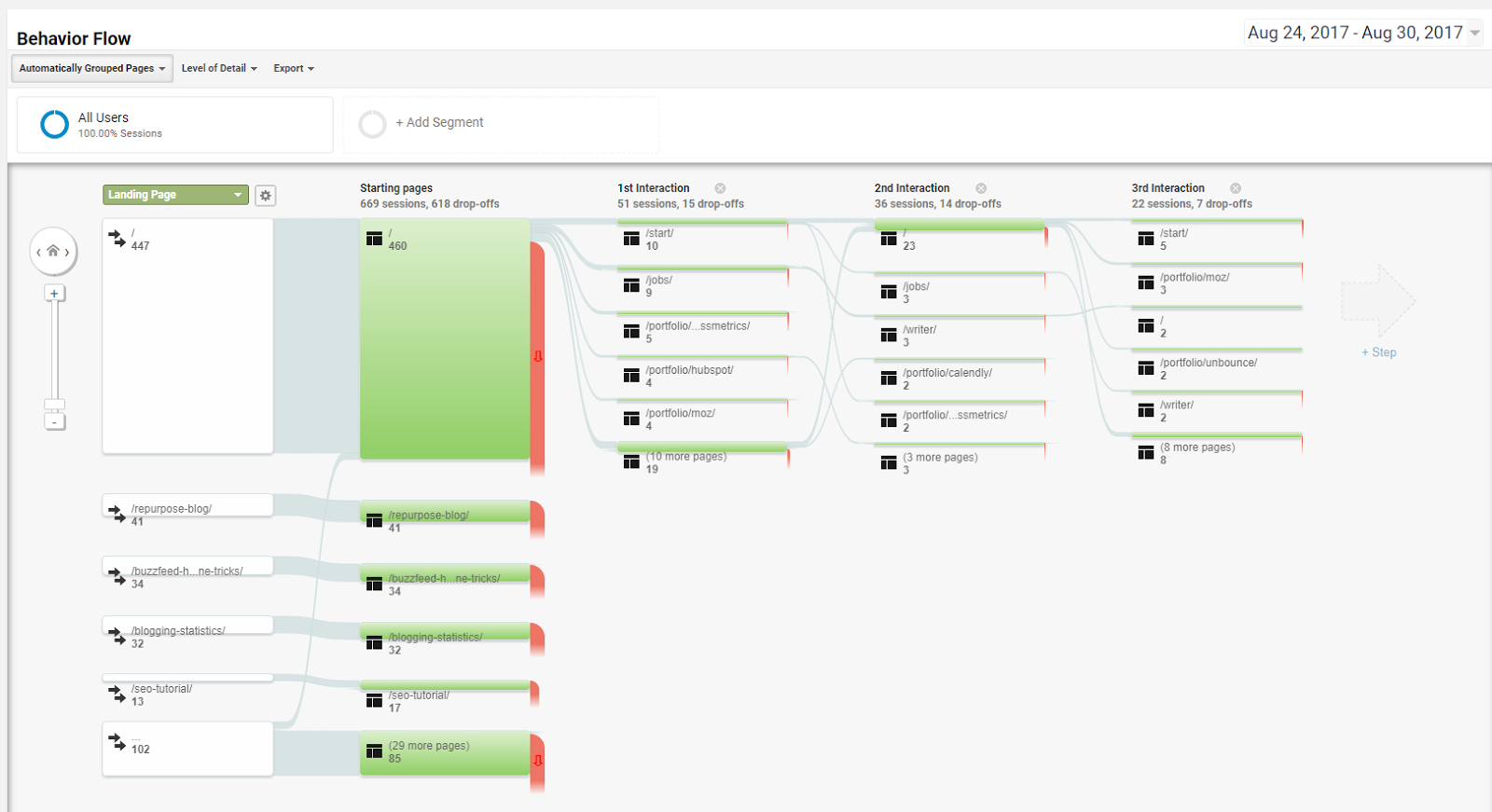



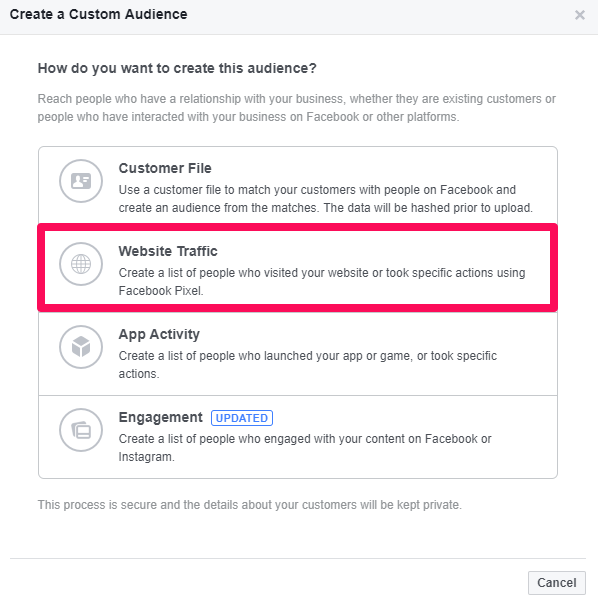
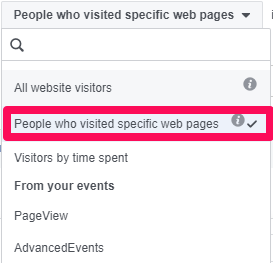

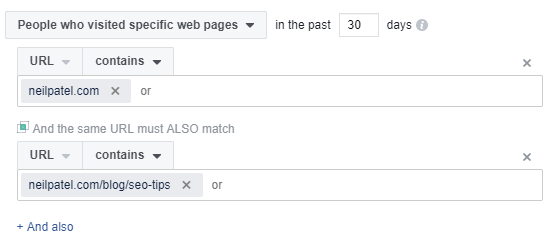
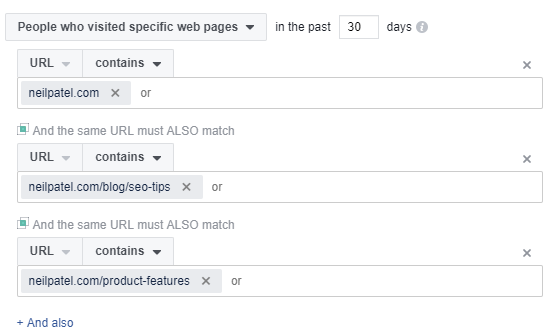

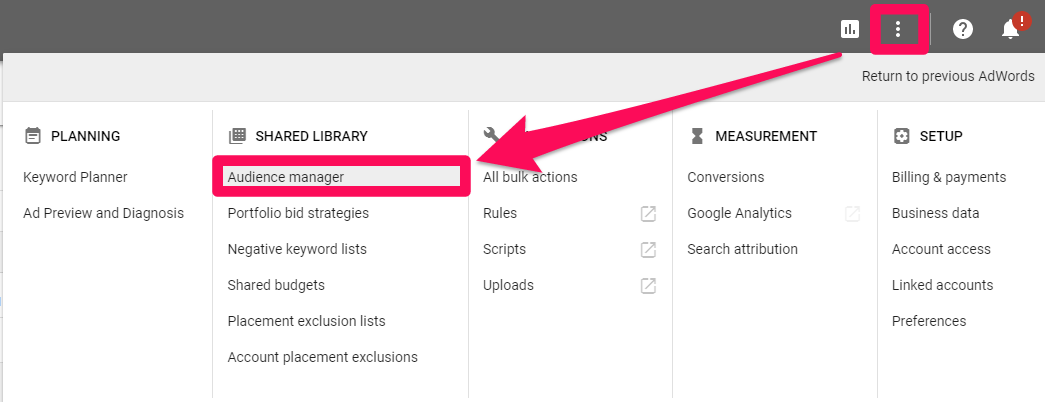



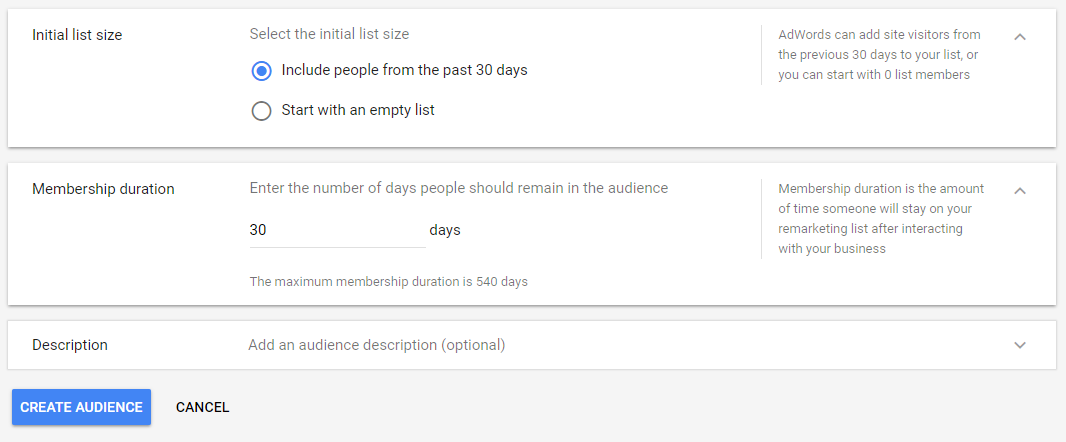

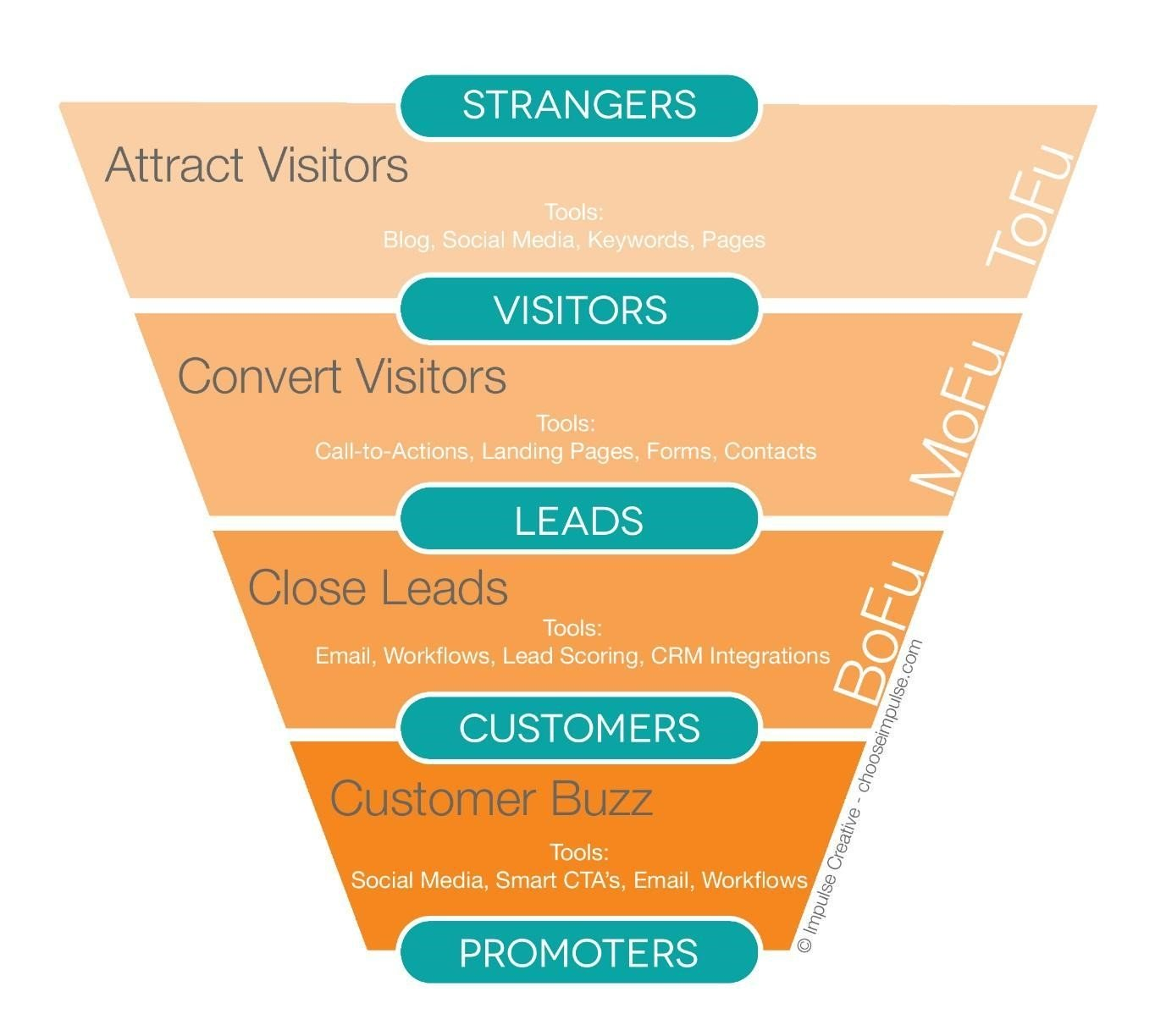
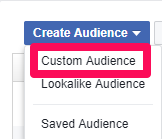
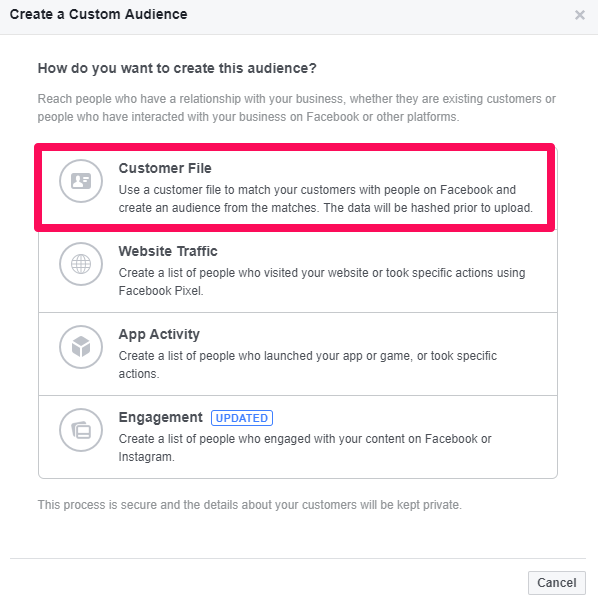
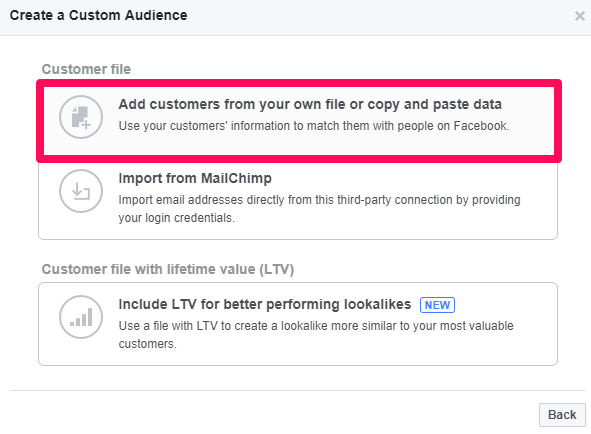
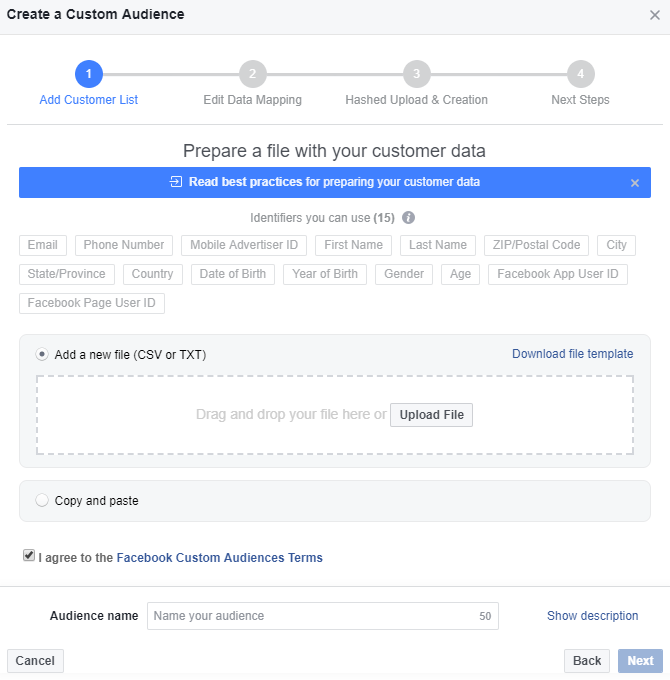

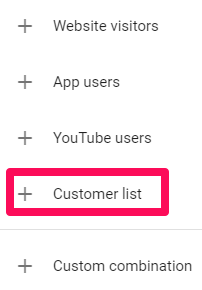
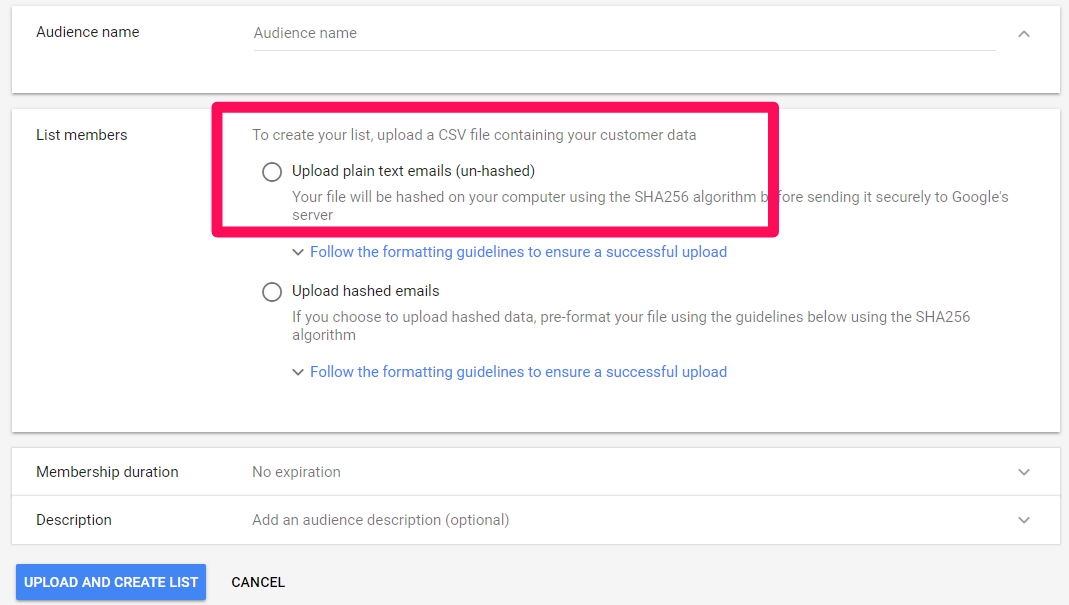
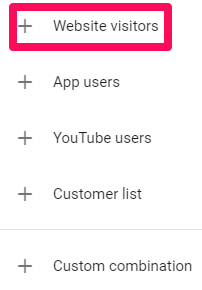


Comments (0)